Wheat Berries Deciphered: Unlocking the Secrets of Flour Varieties
Ahhh wheat berries…
These precious gifts have so much packed into such a tiny little kernel. While some refer to them as wheat kernels and others as wheat seeds, the term most commonly used to describe them is “wheat berry.” So, if you are here for a quick printable guide I have one in my printable library HERE.
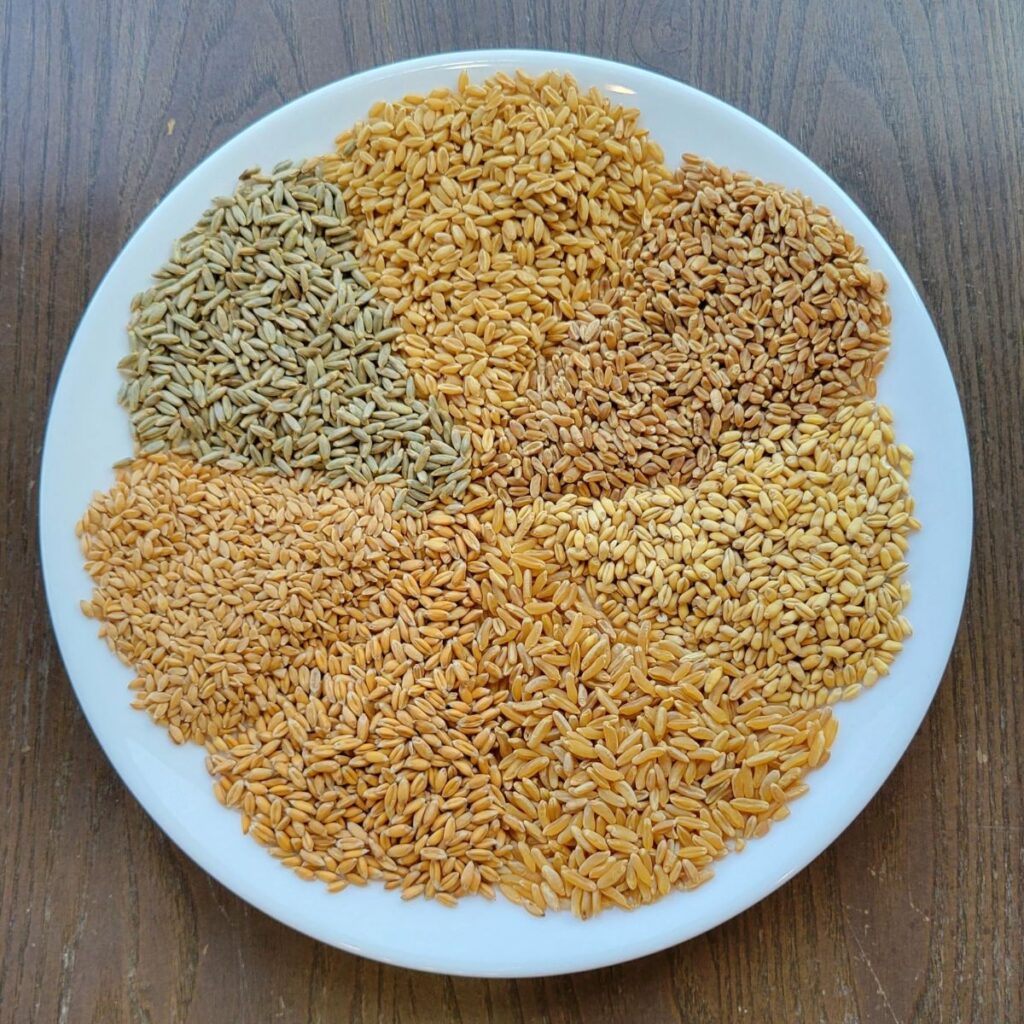
And, I want to finally Decipher all the questions surrounding all the different varieties of wheat berries. Although, I will cover an extensive list of wheat varieties, this is not a complete list of every single type there is.
However, if we want to discuss the different types of wheat berries, then we need to first learn what a wheat berry is.

What Are Wheat Berries?
Wheat berries, often referred to as the whole grain form of wheat, are the edible kernels that comprise the wheat plant. They are the complete seed, consisting of three parts: the bran, germ, and endosperm. Unlike processed flour, wheat berries retain all the nutritional goodness of the entire grain. Wheat berries are incredibly versatile and can be used in salads, soups, pilafs, breakfast bowls. But, my favorite method is – ground into flour for baking. Packed with fiber, vitamins, minerals, and antioxidants, these tiny powerhouses provide sustained energy and contribute to a balanced and wholesome diet. Wheat Berries contain 40 of the 44 nutrients that humans need to live, that is pretty powerful, don’t you think? So, whether you’re seeking to enhance your meals with nutritious ingredients or explore new culinary possibilities, wheat berries offer a delightful and nourishing addition to your kitchen repertoire.
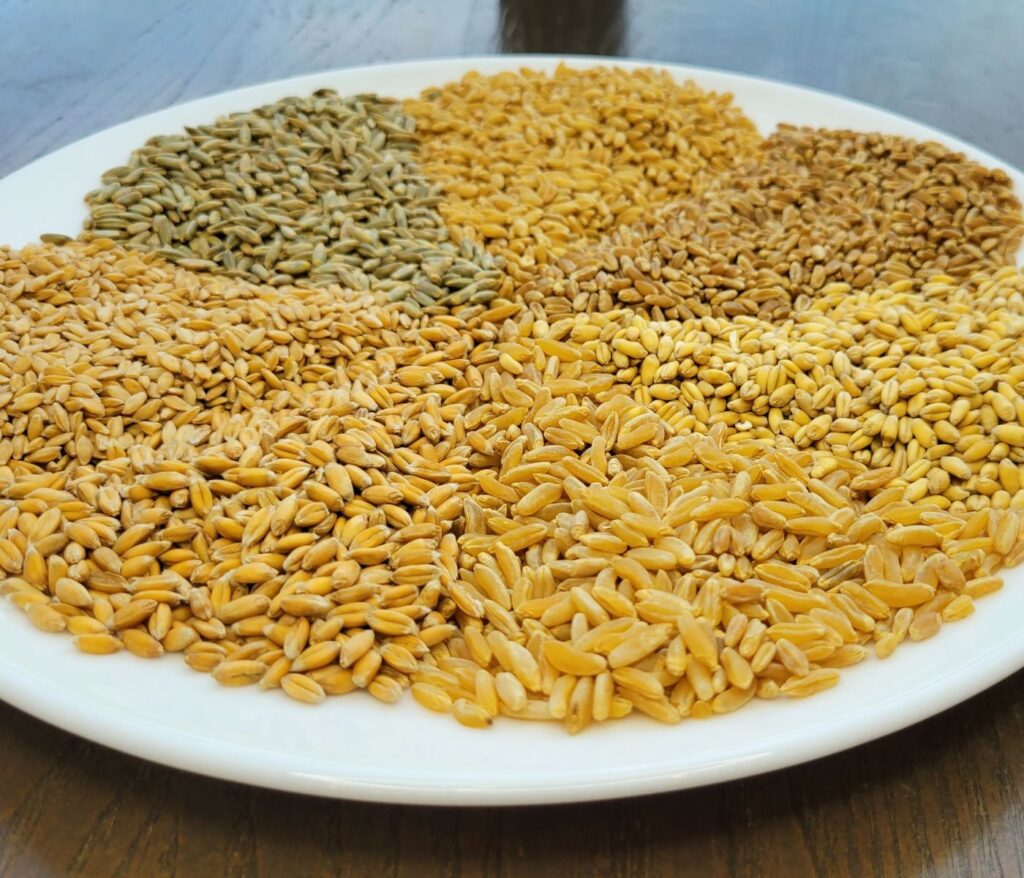
Is Baking With Fresh Milled Flour Different Than Regular All Purpose Flour?
Yes! Baking with fresh milled flour is very much different. In fact, so different that there are specific recipes written just for fresh milled flour. Even if you have been baking for 30 or 40 years, there is a major learning curve! I went through this learning curve before there was much help out there. Which meant I had to result to much trial and error. Because of this, I know learning to bake with fresh milled flour can be a pain point for many people. And, unfortunately many people give up right before they perfect it! So, because of this I want to help those with this pain point. This is where my passion is, my goal is to help others learn so they will stick with it, and then love it!
Hard Wheat Berries
So, let’s start out with the wheat varieties commonly referred to as hard wheat. Hard wheat varieties are the wheat berries you want to use for yeast or sourdough risen breads. These wheat kernels have a high protein content, and develop the most gluten while kneading.

Hard White Wheat
Hard White Wheat is a very versatile wheat variety. It is lighter in color, and a subtle flavor that beautifully complements most baked goods, especially breads! One of the most common wheat varieties used today is Hard White Wheat. Probably due to the fact that is great for seasoned bakers, and beginners alike!
This remarkable grain, has a decent protein content, and develops gluten readily. This is what yields a tender and light result in baked goods such as bread, rolls, and pizza doughs. Its mild taste allows other ingredients to shine, making it a perfect canvas for various flavors and spices. Hard White Wheat flourishes as a dependable and delightful choice.
In a pinch, if you can only have one kind of wheat in your arsenal, this would probably be a great choice! It makes beautiful breads, sourdough, and pizza dough. Alternatively, it can make a pretty decent cookie all the way to nice homemade pasta.

Hard Red Wheat
Hard Red Wheat is a powerhouse among wheat varieties, because exhibits an impressive combination of strength and flavor. Renowned for its high protein content and gluten strength, this variety is a great choice for bread, rolls, and heartier baked goods. Hard Red is often what fresh milled flour bakers would compare to “Whole Wheat”. Even though technically any baked good made with any fresh milled flour variety is whole wheat. But, when explaining to others unfamiliar with freshly milled wheat, it is the best way to describe it.
It has a stronger richer, almost nutty taste, which adds depth and character to baked goods. This grain is darker in color, and will deliver a wholesome and satisfying eating experience. Hard Red Wheat stands as a reliable gluten forming option. Because every bite is infused with a hearty, distinctive flavor and a robust texture.
Soft Wheat Berries
Next up is the soft wheat varieties, and these are perfect for cookies, muffins, quick breads, pastries and everything that does not require gluten. They are known for their delicate nature and mild flavors, and offer a tender, softer texture to baked goods.
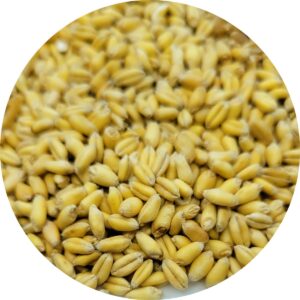
Soft White Wheat
Soft White Wheat has gentle and delicate characteristics. It has a lower protein content compared to its hard wheat counterparts. Soft White Wheat produces flour that is tender and light. It has a subtle flavor profile that allows other ingredients to shine, making it a versatile choice for cakes, pastries, cookies, and more. The flour derived from Soft White Wheat brings a soft crumb, a hint of sweetness, and a delicate texture to your favorite treats. Whether you’re indulging in a fluffy sponge cake or savoring a melt-in-your-mouth pastry, Soft White Wheat delivers a delightful and refined experience that is simply irresistible.
Soft White Wheat is one of the more common soft wheat variety used. I will add, that if you can only have 2 different wheat varieties on hand, this would be a great option (along with the hard white wheat.) As it is extremely versatile and can be used in any recipe that doesn’t rely on gluten formation. This is another great grain to start out with.
Soft Red Wheat
Soft Red Wheat offers a delightful balance of flavor and versatility. It also has a lower protein content. Soft Red Wheat berries produce flour that is darker in color than the more popular soft white wheat. It has more of the “whole wheat” look to it, but is still a wonderful choice for creating delicate pastries, tender cookies, and delectable muffins. The subtle sweetness and smoothness of Soft Red Wheat flour can enhance any baked good, providing a delightful treat. Whether you’re seeking to create a comforting batch of scones or a batch of buttery biscuits, Soft Red Wheat flour ensures a gentle and enjoyable outcome every time.
Ancient Grains – Wheat Berries
Ancient grains are grains that have been cultivated for thousands of years and have retained their original characteristics. There are many other examples of “non-wheat” ancient grains, but today we will focus on the wheat varieties that fall into this category. Those seeking alternatives to modern grains are drawn to ancient grains for their natural resilience, distinct flavors, and nutritional value. These grains have gained popularity due to their unique characteristics and ability to provide wholesome options in contrast to conventional grains.
Many people that have gluten intolerance have been able to successfully consume ancient grain wheat varieties without any ill affects. However, I am not a human medical professional, and am just documenting other people’s experiences. I don’t recommend someone with Celiac attempt to eat these.

Khorasan
Khorasan wheat is often called Kamut, which is actually a brand name. At a glance, you can see that Khorasan wheat is a larger grain than other wheat varieties, and has a beautiful golden hue. It showcases a rich, buttery, and slightly sweet flavor. Renowned for its nutritional density, it has a higher protein content, more essential minerals, and amino acids compared to conventional wheat.
People cherish Khorasan wheat for its potential health benefits and find it well-tolerated by some individuals with wheat sensitivities. Its versatility shines in a wide range of recipes, from baking and pilafs to salads, adding a delightful nuttiness and satisfying chew. Khorasan wheat was thought to be extinct, until its rediscovery. Not too long ago, some kernels were found in an Egyptian tomb, which reintroduced this beloved ancient wheat variety.
Khorasan Wheat is one of my favorite varieties to use for pasta, and I also love to use some in almost all of my bread products. I mix it with a hard wheat variety, because Khorasan wheat does not form very strong gluten. However, I have made successful bread loafs using exclusively Khorasan Wheat. You can find the results of that in my video HERE.

Spelt
Spelt is known to have a reddish color with a nutty, slightly sweet taste. It brings a delightful complexity to a wide range of dishes. It also has a higher protein content, but not strong gluten. Spelt contains an excellent nutritional profile, including fiber, vitamins, and minerals. Spelt flour, popular among bakers, lends a delicate yet hearty texture to bread, pastries, and pasta. Beyond baking, spelt can be enjoyed in salads, pilafs, and grain bowls, offering a wholesome and satisfying addition.
Spelt is an amazing addition when added to muffins, quick bread, and waffles! Really I use part spelt in most recipes that call for soft wheat, especially if I want that darker color in my end product. But, spelt is also a wonderful addition in bread when used with a hard wheat variety. I have not met anyone who did not enjoy the taste spelt in anything I bake it in.
HERE I have our FAVORITE Spelt Waffle Recipe!

Einkorn
Einkorn is one of the oldest wheat varieties we know of, and it has gained a ton of attention lately on social media. It has a long and slender kernel that retains its hull. Einkorn flour has a slightly sweet and nutty flavor, which adds a delightful dimension to baked goods such as bread, cookies, and pancakes. Einkorn has a high protein content, essential minerals, and antioxidants. Many love this grain because it is a nutritious and flavorful alternatives to modern wheat.
Additionally, some individuals with gluten sensitivities find that einkorn is easier to digest due to its simpler genetic makeup. Embracing einkorn reconnects us with our ancient agricultural roots while offering a delicious and nourishing addition to our culinary adventures.
I have a love-hate relationship with Einkorn. LOL. Einkorn can be finicky to work with, because of it’s structure. Kneading too much and overworking will cause it to get kind of “gluey.” So, I love to use it in recipes that don’t require kneading or much mixing, such as muffins, cookies, etc. There are many content creators and other bloggers who have developed a skill for working with Einkorn, and I applaud them. Learning Einkorn is a labor of love, but once mastered, it takes baking to a new level!
HERE I have great brown butter chocolate chip cookie recipe made with Einkorn.
Emmer
Emmer is also believed to be one of the earliest cultivated grains. It has a robust protein profile, fiber content, and essential minerals. Emmer resurgence shows a growing appreciation for ancient grains, connecting us to our agricultural heritage and providing a delightful and nourishing addition to modern cuisine.
At the time of writing this, I have not yet had the pleasure to bake with Emmer. It is on my list, but I am having a difficult time finding it in it’s whole form. But, once I find some, I will be sure to let you all know!
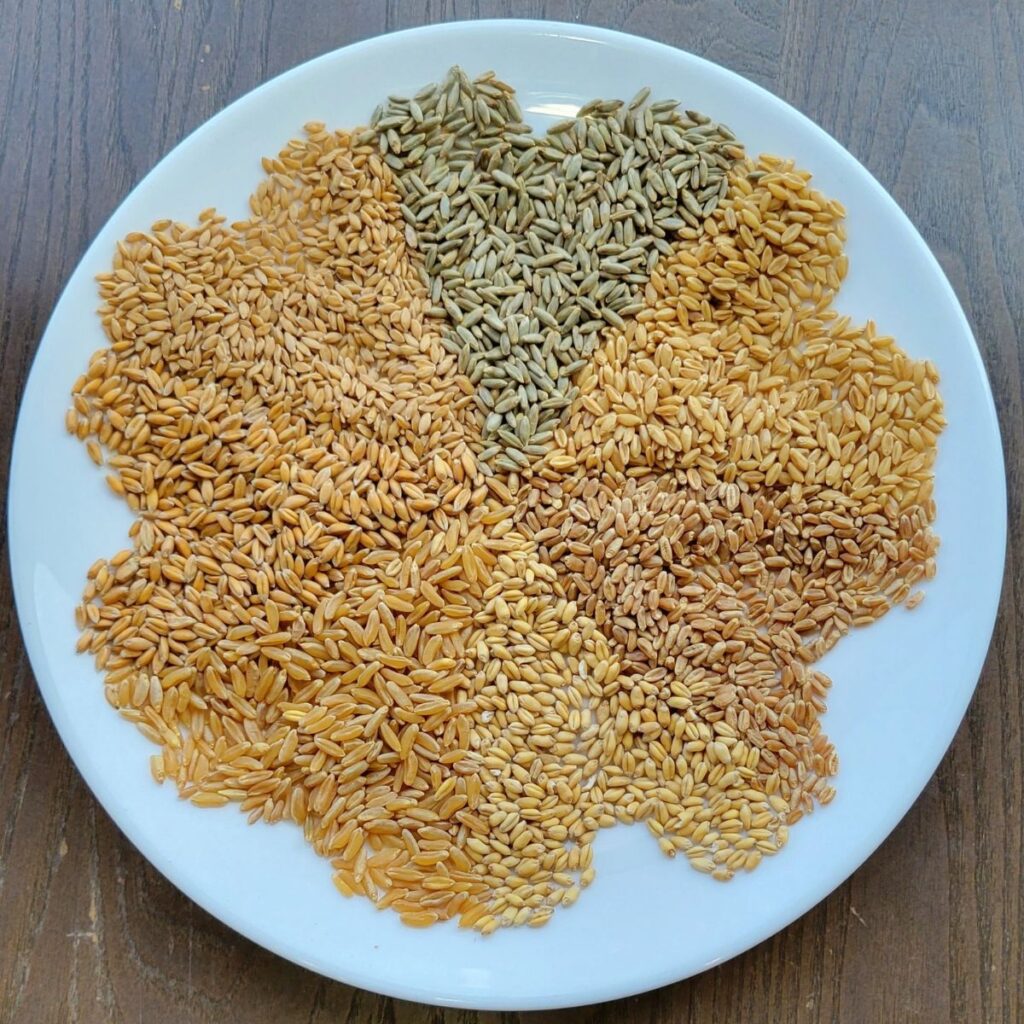
Other Varieties & Different Grains (Honorable Mentions)
This section is for all those others that I didn’t have a place that fit just right. So, let’s just call this the miscellaneous section.
Durum Wheat
Durum wheat is known for its firm texture and high protein content. It is the wheat variety that plays a role, not only in traditional pasta-making, but also the production of semolina. It has a golden hue, and is ideal for creating perfectly al dente pasta dishes that hold their shape during cooking.
I have made pasta with Durum and it is lovely, however, I will admit that I prefer Khorasan pasta over durum pasta. It makes it just a bit more tender. In fact, HERE is my absolute favorite pasta recipe ever!

Rye
Rye has a earthy and slightly tangy taste, and have a green hue to them. It brings a distinct character to bread, crackers, and other baked goods. Rye is a hearty grain. Also, it is appreciated for its nutritional benefits, like high fiber content and essential vitamins and minerals.
When I add Rye to my baked goods, it adds a hearty and rustic twist. Admittedly, I don’t love a strong Rye flavor in my bread, but that is actually due to the Carraway seeds added in. My favorite Rye recipe would have to be what my kids used to call “Brown Bread,” which is my Pumpernickel Bread Recipe, you can find HERE.
Also, another great use for Rye is in sourdough starter. Adding rye flour into a sourdough starter can be a quick boost! It creates a more active fermentation process, which leads to a more lively and vigorous sourdough starter. This is because Rye contains higher levels of natural sugars and beneficial microorganisms, which provides an ideal environment for your sourdough culture. If you already have a sourdough starter, and are looking for sourdough recipes made with all fresh milled flour, HERE is my list of the current recipes. I am adding more all the time!
Mix Those Wheat Berries!
In conclusion, the wonderful world of wheat varieties awaits your exploration. Embrace the joy of mixing them up in recipes to savor their unique flavors and textures. Don’t hesitate to combine different wheat varieties in the same dish, allowing you to capture the best properties and flavors from each, creating truly delightful culinary experiences.

Printable Quick Guide
I have a printable quick guide that goes over which wheat berry to use for what purposes. Also, the weight of 1 cup of each wheat berry variety. It is pretty surprising at how much they differ in weight! Checkout my printable library HERE. (Now free, used to be password protected exclusive!)
Fresh Milled Flour 101
Learn how to mill your own flour at home! Checkout my Fresh Milled Flour 101 Video HERE
Shop This Post
Checkout Some Of My Fresh Milled Flour Recipes Using Different Wheat Berries
Fresh Milled Flour Recipe Index
Wheat Berries Explained – The Different Types Of Wheat Berries Video
*This post contains affiliate links, which means I make a small commission at no extra cost to you! As an Amazon Associate I earn from qualifying purchases. But, I will only suggest items I actually Love and Have Used!




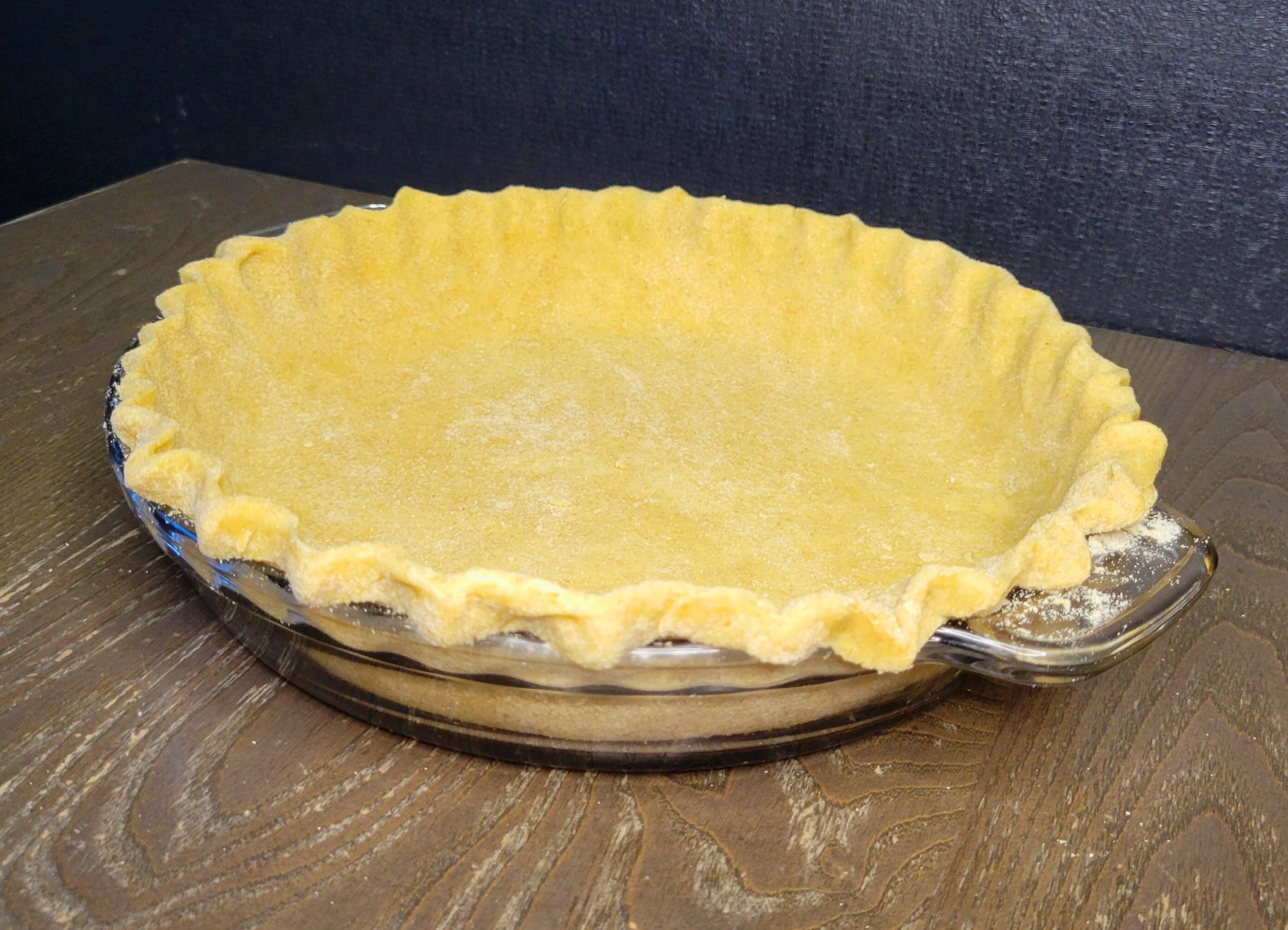
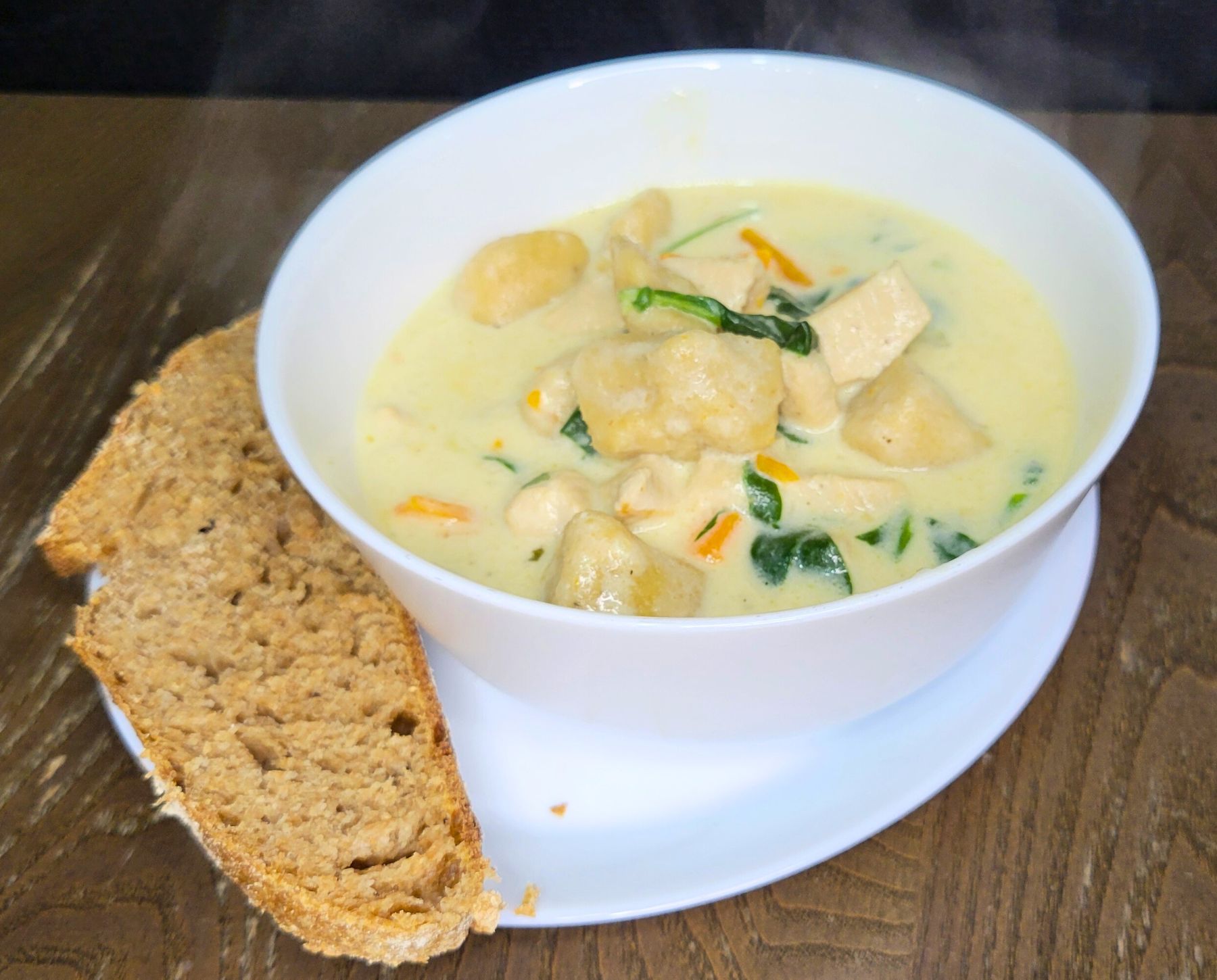

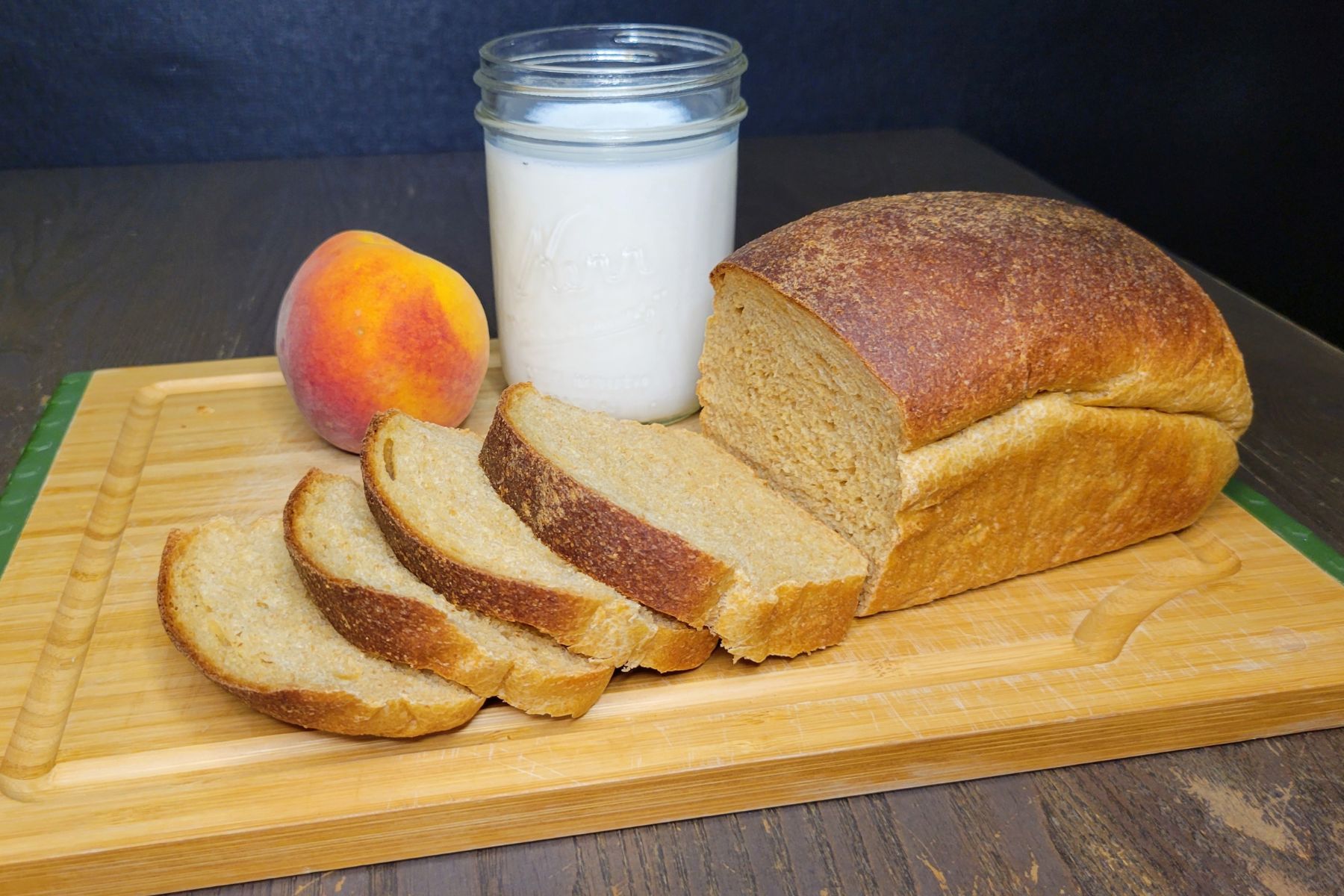

Thank you SO much for this article! Super helpful as I start exploring more with wheat berries! I didn’t know if you found Emmer berries yet but I ran across these on Amazon and thought I’d pass it on in case you hadn’t had the chance to experiment with them yet. 🙂
Thanks again!
https://www.amazon.com/Grand-Teton-Ancient-Food-Grade-Sprouting/dp/B0BQPLHFXD/ref=sr_1_26?crid=3NI1437LJGECG&keywords=organic+wheat+berries&qid=1698261501&sprefix=organic+wheat+berrie%2Caps%2C185&sr=8-26
Thanks so much!
I know not many people know about this because it’s used as cattle feed, but, I prefer triticale to rye. If you don’t know, triticale is a wheat/rye hybrid and it’s hard to find. I prefer making rye bread with a dark honey, like buckwheat, but like to use molasses in triticale bread..
I have heard of triticale, but yes it is pretty rare in the human world! lol I have not had the pleasure of working with it however. Thank you so much for the info! Happy Baking!
You can also find Emmer grain at AzureStandard.com
I actually just picked some up from there. Thanks so much! I plan to make a video soon on my first Azure order ever!
Very good article, unfortunately my old tired eye cannot read the light print well and I could only get through enough lines to know I do want to read the whole article. So I’ll save as a favorite and come back for a apiece at a time. However, do you have a book out covering this same information, maybe with some recipes of your own for each type of grain? Or, can you recommend a book hat has this same type of easily readable style?
I have several Youtube videos with tips, recipes, and tutorials. Here is my video on the wheat berries, but I have several videos on almost every blog post as well. https://youtu.be/EgWp0Ee6_QI
Where do you purchase your hard white wheat berries? I love how light your yeast doughs are.😊. My doughs and baked yeast goods look so “whole wheatish”🤔
I have been getting mine from Azure lately, my most recent video, at the end shows the quality of it! https://youtu.be/znQdMZrR5_8